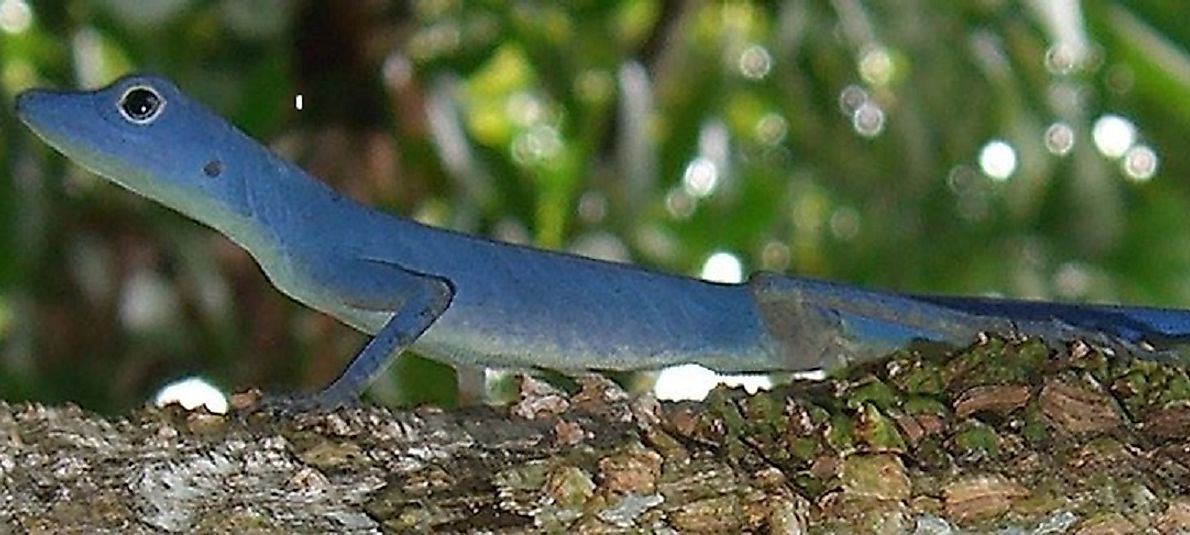Native Reptiles Of Colombia

Colombia’s collection of native fauna is characterized by high levels of biodiversity, with the country having the highest rate of species per unit area in the world. Many of the species of Colombia are endemic to the country, with 10% of the world’s species living in Colombia. The distribution of fauna species in the country is influenced by the weather conditions, availability food, and the animals’ behavior. Colombia has the sixth highest species of reptiles in the world and the third richest in Western Hemisphere. The country has a total of 518 species of reptiles, only three less than India. Some of the native reptiles of Colombia are looked at below.
Yellow-headed Gecko
The Yellow-headed Gecko, scientifically known as Gonatodes albogularis and sometimes referred to as the white-throated gecko, is a gecko species common in the warm parts of South America, especially Colombia, and it has also been introduced into the U.S. state of Florida as well. The species is further divided into four subspecies having almost the same features. An adult Yellow-headed gecko can grow to 90 millimeters, with the male having a yellowish head and a blue body, and the female having a white-gray head and body. It has a round pupil and digit. Yellow-headed gecko is diurnal and feeds on insects. The female lays eggs on a seasonal basis with most eggs laid during the rainy season.
Blue Anole
The blue anole, scientifically referred to as Anolis gorgonae, is one of the world’s pure blue lizards. The highly threatened lizard belongs to the polychrotid lizard species found in the dense forest of Gorgona, Colombia Pacific. The Blue anole looks similar to a slice of the sky because of its pure blue color. The male lizard has a white dewlap which beautifully contrasts the blue skin. Some of the Blue anoles have series of darker mottled spot especially on the head and the neck. The lizard species is very rare and threatened as a result of deforestation and captive breeding. The Blue anole is also prey to other lizard species including the introduced Western basilisk.
Magdalena River Turtle
The Magdalena River turtle, scientific name Podocnemis lewyana, is a turtle species in the Family Podocnemididae. It is classified as critically endangered species because of the rapid reduction in their number due to the habitat loss and commercial exploitation. Magdalena River turtle is endemic to Colombia and it is confined to Magdalena River Basin. The turtle is side-necked and cannot retract its head backward but instead hides it sideways. Magdalena River turtle inhabits streams, rivers, and flowing water with its shell modified to help in the swimming.
Dunn's Spiny-Tail Lizard
Dunn's Spiny-Tail Lizard, scientifically known as Morunasaurus groi, is found in the northwestern regions of South America and parts of Panama. The male hoplocercid lizard is reddish-brown with a dark transverse band on its back. It has a red neck while the tail is covered with small spines. The head is also reddish while the chest is pale orange. Dunn's Spiny-Tail Lizard lives in burrows under fallen logs which it excavates. It feeds on insects and other smaller invertebrates and breeds during low-temperature seasons.
Native Snake Species and Threats to Colombian Reptiles
Other native reptiles in Colombia include several snake species, such as the Thick-Head Ground Snake, Green Anaconda, and Colombian Toad-Headed Pit Viper. These native reptiles are threatened by habitat destruction due to human activities such as deforestation and settlements.
Native Reptiles Of Colombia
| Native Reptiles Of Colombia | Scientific Name |
|---|---|
| Yellow-Headed Gecko | Gonatodes albogularis |
| Blue Anole | Anolis gorgonae |
| Magdalena River Turtle | Podocnemis lewyana |
| Dunn's Spiny-Tail Lizard | Morunasaurus groi |
| Thick-Head Ground Snake | Atractus crassicaudatus |
| Green Anaconda | Eunectes murinus |
| Dotted Malpelo Galliwasp | Diploglossus millepunctatus |
| Ratonel | Pseudoboa neuwiedii |
| Dahl's Toad-Headed Turtle | Mesoclemmys dahli |
| Colombian Toad-Headed Pit Viper | Bothrops colombianus |







